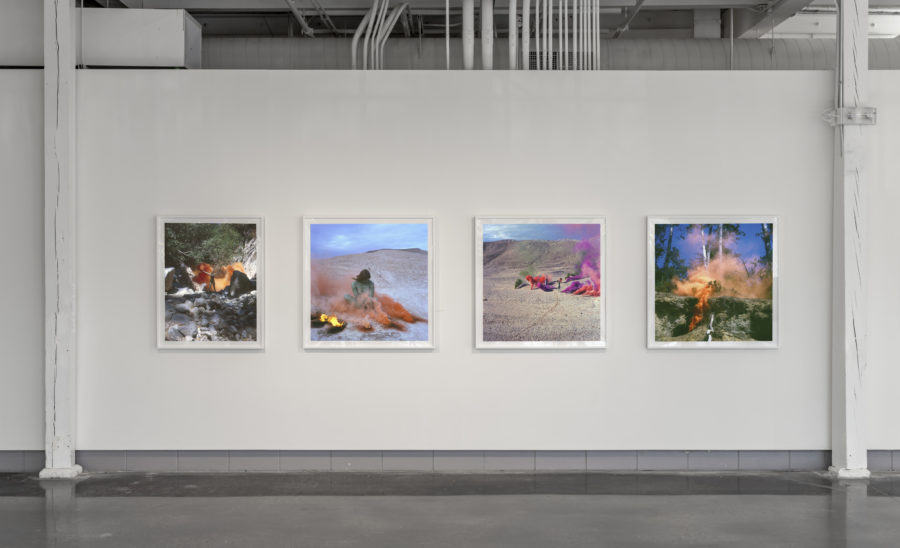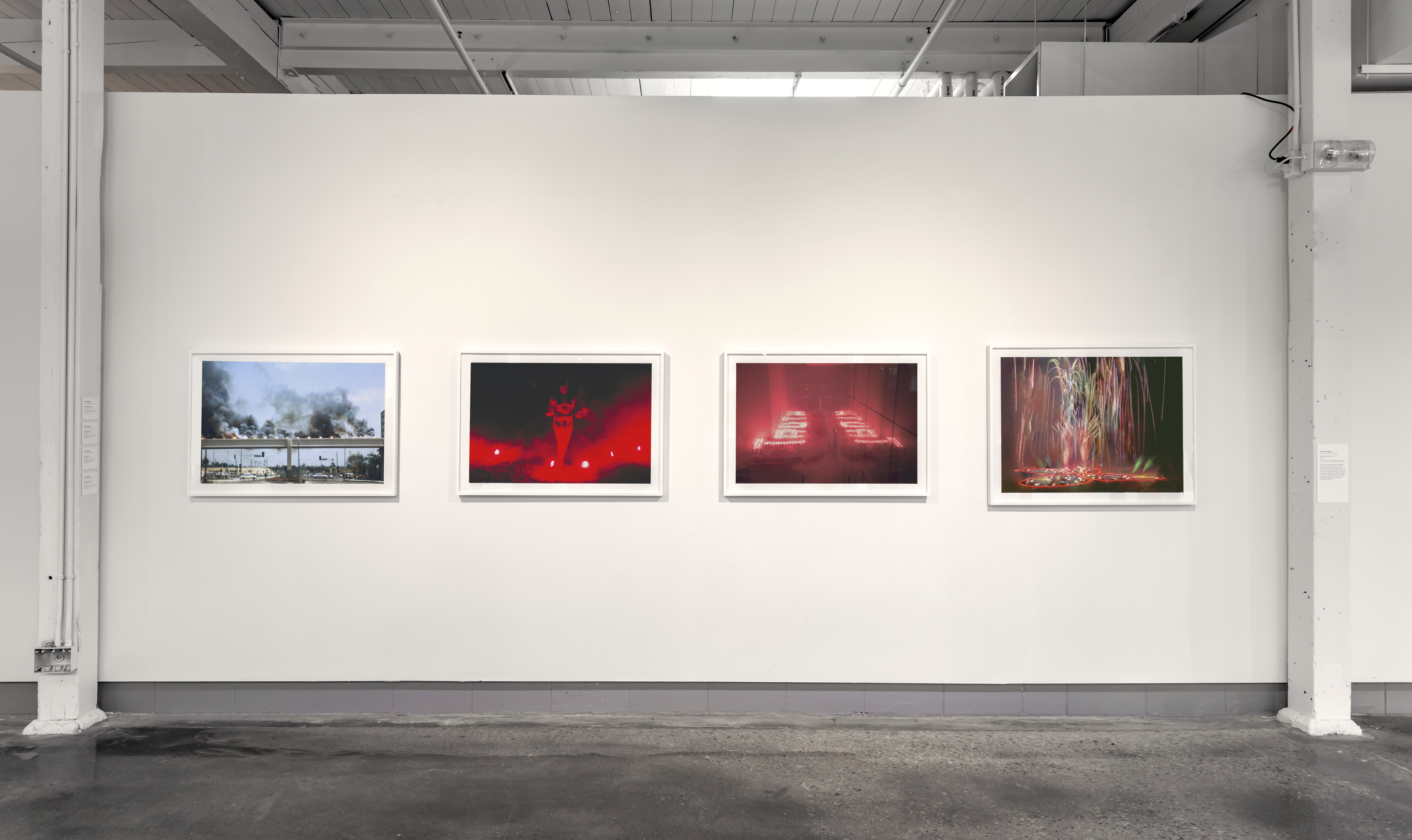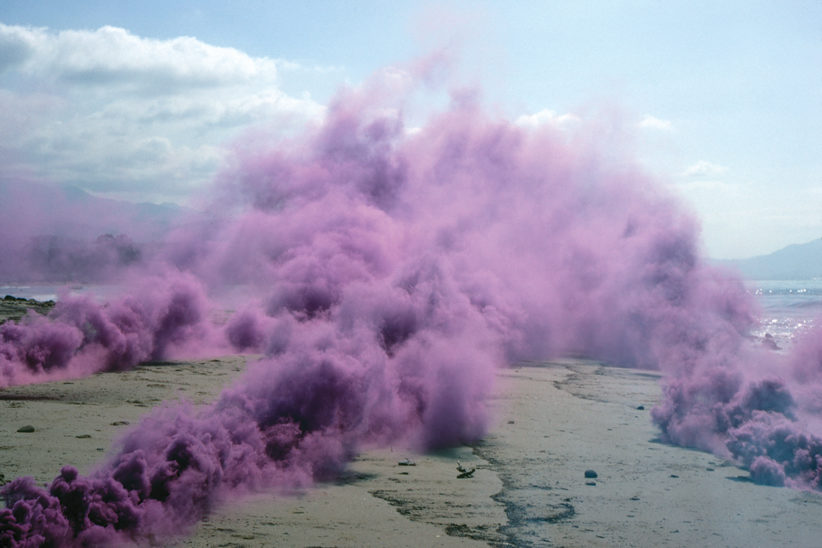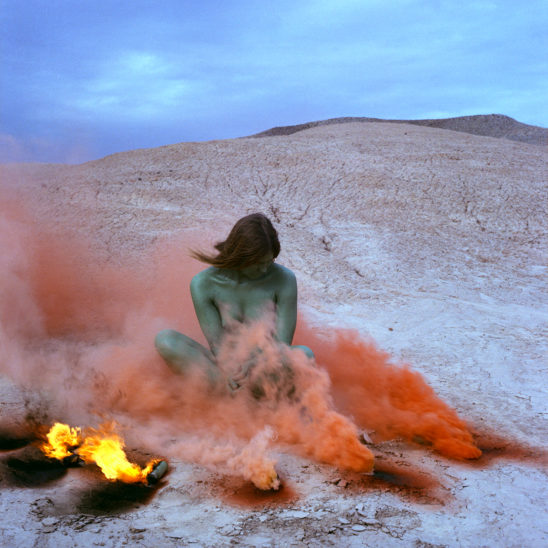September 21 – December 1, 2019
Chicago first turned to pyrotechnics in the late 1960s in an effort to feminize the atmosphere at a time when the California art scene was male-dominated. Between 1968 and 1974, she executed a series of increasingly complex firework pieces that involved site-specific performances around California. The photographs in the Atmospheres series transform and soften their surrounding landscapes, introducing a feminine impulse into the environment. With a team of friends, Chicago began to create more ambitious projects that transformed beaches, parks, forests, deserts, construction sites, and museums with whirling plumes of brilliant colour that were organized according to the principles she developed in order to use colour as a metaphor for emotive states.
Chicago’s photographs are accompanied by Women and Smoke: California, 1971-1972, a video compilation of Atmospheres. These performances emerged in parallel with the rise of Land Art in the 1960s and ‘70s, a movement that Chicago critiqued as being hyper-masculine and founded on large-scale interventions into the earth. The atmospheres initially took place in cracks and fissures in the land, the smoke softening the landscape and eventually disappearing altogether.
This project is made possible with the generous support of Smokestack.
Bio
The work of Judy Chicago (born in Chicago, IL, USA; lives in Belen, NM, USA) has been included in noteworthy thematic exhibitions such as: The World Goes Pop, Tate Modern, London, 2015; Ends of the Earth—Land Art to 1974, Haus der Kunst, Munich, 2012; and Pacific Standard Time: Art in L.A., Hammer Museum, 2011. In 2018 ICA Miami presented the major survey Judy Chicago: A Reckoning, and in September 2019 The End: A Meditation on Death and Extinctionopens at the National Museum for Women in the Arts, Washington, D.C. alongside the release of a monograph of the artist’s work published by Scala.
Exhibition Site
Small Arms Inspection Building (2019)
Small Arms Inspection Building was originally part of a large munitions plant built in 1940 before it was acquired and renovated as an art centre by the City of Mississauga in 2018. With its female dominated workforce, Small Arms Limited manufactured thousands of rifles daily for the Canadian and Allied forces in WWII. In 1990, the TRCA conducted an environmental audit of the site, revealing the presence of polychlorinated biphenyl, volatile organic compounds, and combustible gases across nineteen acres. More than 70,000 tons of contaminated radioactive soil was removed to eventually transform the Arsenal Lands into a park.
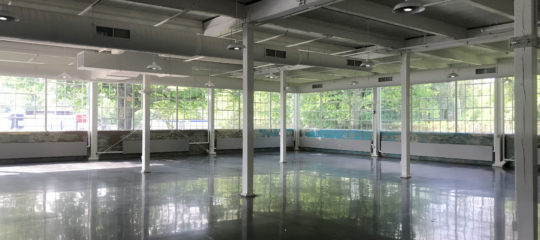
1352 Lakeshore Road East
Mississauga ON
L5E 1E9

